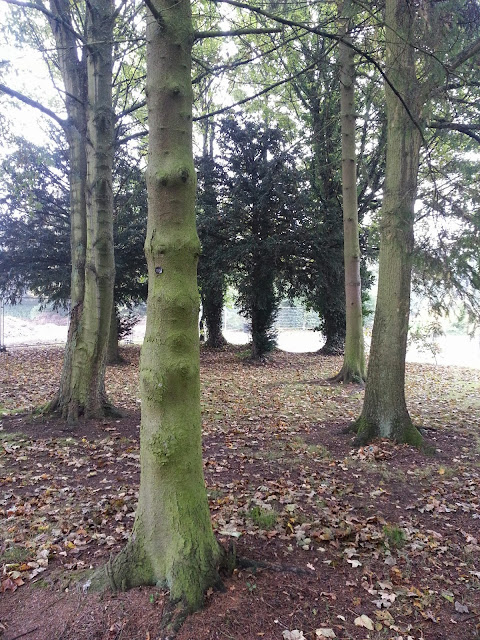334. Twisted tree in the thicket. Hamilton drive in the background. (03/OCT/2013)
335. Small tree in the thicket. (03/OCT/2013)
336. Trees in the thicket. The rubble where Brooksbank Centre once stood in the background. (03/OCT/2013)
337. Trees in the thicket. The OLRC and car park in the background. (03/OCT/2013)
338. View through the thicket. Hamilton Drive in the background. (03/OCT/2013)
339. The thicket. BCC and Hamilton drive in the background. (03/OCT/2013)
340. The thicket. The OLRC and car park in the background. (03/OCT/2013)
341. Ivy covered trees in the thicket. (03/OCT/2013)
342. Horse Chestnut tree hosting Horse Chestnut Leaf Miner Moth caterpillars, which prevent the tree from photosynthesising. The tree will produce smaller conkers and be prone to other diseases. The habitat of these caterpillars expands by 25 miles every year in the UK. Because of this, people are no longer buying Horse Chestnut trees and they are in a decline. However, Blue-tits like to eat these caterpillars. It is possible that, by attracting Blue-tits to the area, the damage to the trees can be reduced. This tree is on the winding path. Alan Geale House in the background. (03/OCT/2013)
343. Damage to a Horse Chestnut leaf, caused by the Horse Chestnut Leaf Miner moth. (03/OCT/2013)
344. Damaged Horse Chestnut tree close to Johnston House. Taken on the winding path. (03/OCT/2013)
345. One of the damaged Horse Chestnut trees and a tall pine tree next to Johnston building. Taken on the winding path. (03/OCT/2013)
346. The Golden Liquid Amber tree is still mostly green, but red at the tips. (03/OCT/2013)
247. The Golden Liquid Amber tree. (03/OCT/2013)
348. The branches of the Golden Liquid Amber tree. (03/OCT/2013)















No comments:
Post a Comment